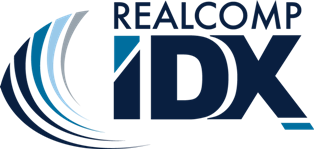
FINANCING BASICS FOR FIRST-TIME HOMEBUYERS
By Robert Stammers, CFA
The myriad of financing options available for first-time homebuyers can seem overwhelming. But taking the time to research the basics of property financing can save you a significant amount of time and money. Understanding the market where the property is located and whether it offers incentives to lenders may mean added financial perks for you. Take a look at your finances to ensure you are getting themortgage that best suits your needs.
Loan Types
Conventional Loans
Conventional loans are mortgages that are not insured or guaranteed by the federal government. They are typically fixed-rate mortgages. Although their stricter requirements for a bigger down payment, higher credit score, lower-income to debt ratios, and potential to need private mortgage insurance make them the most difficult mortgage type to qualify for, conventional mortgages are usually less costly than guaranteed mortgages.
Conventional loans are defined as either conforming loans or non-conforming loans. Conforming loans comply with guidelines such as loan limits set forth by the government-sponsored enterprises (GSEs) Fannie Mae or Freddie Mac because lenders package these loans and sell securities on them in the secondary market. The 2018 loan limit for a conventional mortgage is $453,100 but the amount is higher for designated high-cost areas.
A loan made above this amount is called a jumbo loan and usually carries a slightly higher interest rate because these loans are less attractive to the secondary market. For non-conforming loans, the lending institution underwriting the loan, usually a portfolio lender, set their own guidelines.
FHA Loans
The Federal Housing Administration (FHA), part of the U.S. Department of Housing and Urban Development, provides various mortgage loan programs. An FHA loan has lower down payment requirements and is easier to qualify for than a conventional loan. FHA loans are excellent for first-time homebuyers because, in addition to lower upfront loan costs and less stringent credit requirements, you can make a down payment as low as 3.5%. FHA loans cannot exceed the statutory limit.
VA Loans
The U.S. Department of Veterans Affairs (VA) guarantees VA loans. The VA does not make loans itself, but guarantees mortgages made by qualified lenders. These guarantees allow veterans and service people to obtain home loans with favorable terms, usually without a down payment. In most cases, VA loans are easier to qualify for than conventional loans. Lenders generally limit the maximum VA loan to conventional mortgage loan limits. Before applying for a loan, request eligibility from the VA. If you are accepted, the VA will issue a certificate of eligibility you can use to apply for loan.
In addition to these common loan types and programs, check into programs sponsored by state and local governments and agencies to increase investment or homeownership in certain areas.
Equity and Income Requirements
Home mortgage loan pricing is determined by the lender in two ways, both based on the creditworthiness of the borrower. In addition to checking your FICO score from the three major credit bureaus, lenders will calculate the loan-to-value ratio (LTV) and the debt-service coverage ratio (DSCR) to set the loan price.
LTV is the amount of actual or implied equity that is available in the collateral being borrowed against. For home purchases, LTV is determined by dividing the loan amount by the purchase price of the home. Lenders assume that the more money you are putting at risk (in the form of a down payment), the less likely you are to default on the loan. The higher the LTV, the greater the risk of default, so lenders will charge more.
LTV also determines whether you will be required to purchase private mortgage insurance (PMI). PMI insulates the lender from default by transferring a portion of the loan risk to a mortgage insurer. Most lenders require PMI for any loan with an LTV greater than 80%, meaning any loan where you own less than 20% equity in the home. The amount being insured and the mortgage program will determine the cost of mortgage insurance and how it's collected.
Most mortgage insurance premiums are collected monthly along with tax and property insurance escrows. Once LTV is equal to or less than 78%, PMI is supposed to be eliminated automatically. You may be able to cancel PMI once the home has appreciated enough in value to give you 20% equity and a set period has passed, such as two years. Some lenders, such as the FHA, will assess the mortgage insurance as a lump sum and capitalize it into the loan amount.
As a rule of thumb, try to avoid PMI because it is a cost that has no benefit to you. There are ways to avoid paying for PMI. One is not to borrow more than 80% of the property value when purchasing a home; the other is to use home equity financing or a second mortgage to put down more than 20%. The most common program is called an 80-10-10. The 80 stands for the LTV of the first mortgage, the first 10 stands for the LTV of the second mortgage, and the third 10 represents the equity you have in the home.
Although the rate on the second mortgage will be higher than the rate on the first, on a blended basis, it should not be much higher than the rate of a 90% LTV loan. An 80-10-10 mortgage can be less expensive than paying for PMI and also allows you to accelerate the payment of the second mortgage and eliminate that portion of the debt quickly so you can pay off your home early.
The debt service coverage ratio (DSCR) determines your ability to pay the mortgage. Lenders divide your monthly net income by the mortgage costs to assess the probability that you will default on the mortgage. Most lenders will require DSCRs of greater than one. The greater the ratio, the greater the probability that you will be able to cover borrowing costs and the less risk the lender takes on. The greater the DSCR, the more likely a lender will negotiate the loan rate because even at a lower rate, the lender receives a better risk-adjusted return.
For this reason, include any type of qualifying income you can when negotiating with a mortgage lender. Sometimes an extra part-time job or other income-generating business can make the difference between qualifying or not qualifying for a loan or receiving the best possible rate.
Fixed vs. Floating Rate Mortgages
Another consideration is whether to obtain a fixed-rate or floating-rate mortgage. In a fixed-rate mortgage, the rate does not change for the entire period of the loan. The obvious benefit of getting a fixed-rate loan is that you know what the monthly loan costs will be for the entire loan period. A floating-rate mortgage, such as an interest-only mortgage or an adjustable-rate mortgage (ARM), is designed to assist first-time homebuyers or people who expect their incomes to rise substantially over the loan period.
Floating-rate loans usually allow you to obtain lower introductory rates during the initial few years of the loan, allowing you to qualify for a larger loan than if you had tried to get a more expensive fixed-rate loan. Although a floating-rate loan can be helpful for some borrowers, they can be risky if your income does not grow in step with the increase in interest rate. The other downside is that the rate change is uncertain since it is usually linked to a future market rate.
The most common types of ARMs are a one, five, or seven-year ARM. The inital interest rate is normally fixed for a period of time and then resets periodically, often every month. Once an ARM resets, it adjusts to the market rate, usually by adding some predetermined spread (percentage) to the prevailing U.S. Treasury rate. Although the increase is typically capped, an ARM adjustment can be more expensive than the prevailing fixed-rate mortgage loan to compensate the lender for offering a lower rate during the introductory period.
Interest-only loans are a type of ARM in which you only pay mortgage interest and not principal during the introductory period until the loan reverts to a fixed, principal-paying loan. Such loans can be very advantageous for first-time borrowers because only paying interest significantly decreases the monthly cost of borrowing and will allow you to qualify for a much larger loan. However, because you pay no principal during the initial period, the balance due on the loan does not change until you begin to repay the principal.
Weigh the benefit of obtaining a larger loan with the risk. Interest rates typically float during the interest-only period and will often adjust in reaction to changes in market interest rates. Also consider the risk that your disposable income won't rise along with the possible increase in borrowing costs.
The Bottom Line
If you're looking for a home mortgage for the first time, you may find it difficult to sort through all the financing options. Take time to decide how much home you can actually afford and then finance accordingly. If you can afford to put a substantial amount down or have enough income to create a low LTV, you will have more negotiating power with lenders and the most financing options. If you push for the largest loan, you may be offered a higher risk-adjusted rate and private mortgage insurance. A good mortgage broker or mortgage banker should be able to help steer you through all the different programs and options, but nothing will serve you better than knowing your priorities for a mortgage loan.
Robert Stammers, C. F. A. (2019, October 4). Financing Basics For First-time Homebuyers. Retrieved from https://www.investopedia.com/articles/mortgages-real-estate/08/homebuyer-financing-option.asp.
About the Author

Diana Van der Vossen
Welcome to Red Tulip Real Estate! My name is Diana. I'm a Real Estate Broker with a toolbox full of professional designations. I’ve mastered the art of turning dreams into “SOLD” signs.
Whether you’re buying your first home, selling the one you’ve outgrown, or just need some expert advice, I’m here to guide you with a mix of savvy negotiation, sharp market insights, and a dash of good humor. Let’s make this journey smooth, successful, and maybe even fun. After all, real estate should be exciting, not stressful!
Let’s talk—because your perfect home (or buyer) is just around the corner.

